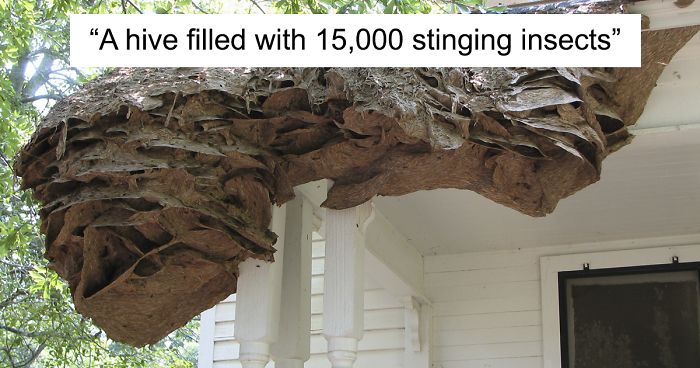
Wasps Are Building Massive “Super Nests” In Alabama And People Are Frightened
If you’re planning to visit your relatives in Alabama, you might want to reschedule. Recently, scientists issued a warning to the locals: thousands of wasps are making the state home to what are called perennial yellow jacket nests. And they’re not something you’d feel comfortable standing next to.
Image credits: Charles Ray
The Alabama Cooperative Extension System warned of nests the size of a Volkswagen Beetle, with up to 15,000 wasps buzzing inside ― about four times the size of a normal nest. This isn’t the first time Alabama is becoming a set for a horror film. In 2006, experts located 90 perennial nests in the state, and entomologist Charles Ray said something like this can happen again in 2019.
Yellow jacket nest on a house
According to Mr. Ray, a warm winter is one of the factors that allow wasps to form these nests. Most yellow jackets don’t survive the cold months because they freeze or starve to death.
“The queens are the only ones who have an antifreeze compound in their blood,” Mr. Ray said. “So normally, a surviving queen will have to start a colony from scratch in the spring. With our climate becoming warmer, there might be multiple surviving queens producing more than 20,000 eggs each.”
Yellow jacket nest filling a car
The picture gets even darker when you consider that yellow jackets are responsible for almost all of the stinging deaths in the United States. Unlike honey bees, yellow jackets can sting repeatedly and tend to attack in large numbers.
Mr. Ray thinks that Alabama may see a lot of these nests this year.
“We confirmed two nests in May and have indications of a third,” he said. “This puts us several weeks earlier than in 2006 when we identified the first giant nest on June 13.”
“If we are seeing them a month sooner than we did in 2006, I am very concerned that there will be a large number of them in the state. The nests I have seen this year already have more than 10,000 workers and are expanding rapidly.”
Yellow jacket nest in a discarded mattress
“These perennial nests may be several feet wide and have many thousands of workers, far more than an average nest,” Mr. Ray said. “We have found them attached to home exteriors and other places you might not expect to find yellow jackets.”
However, some time ago, one nest in South Carolina was confirmed to have more 250,000 workers.
Above-ground yellow jacket nest
Mr. Ray has also a couple of tips for everyone who might stumble upon such a nest. “First and foremost, do not disturb the nest,” he said. “While these giant nests often appear less aggressive than smaller colonies, it is important that people do not disturb the nests.”
Also, Mr. Ray asked people to contact him so he can document the nest and collect insect specimens. People should contact him by email at raychah@aces.edu or at raychah@auburn.edu.
Image credits: Matteo Sani
Yellow jacket queen
Yellow jacket workers
Yellow jacket stinger in its sheath in the scanning electron microscope
Image credits: en.wikipedia.org
Image credits: Alabama Extension
Image credits: Berndt Petersen
People had a lot to say about these ‘super nests’
Oh Alabama, think of all the pupas and the larvaes.... Its crime to kill living things. They have a heartbeat !!!! Its on you people. Killing and going to jail. This is nature telling you that morons who think they own a woman's body are doomed.
The thing with a changing climate since we changed the composition of the very air we breathe is not that life will die out on Planet Earth, it is that human beings will not find it easy to survive. Many other beings will find new opportunities to thrive. The planet as such does not care one iota. Maybe we should?
I think because of loss of natural habitats they are invading our homes. The more and more built up areas become the less places there are for the wildlife. Where else are they going to go except try to adapt to their new surroundings.
Omg Lios, I am not disagreeing with you or the scientists about the weather factor etc. All I am saying is that with loss of natural habitats, animals and insects are more commonly “invading” peoples homes/sheds/businesses etc. 🙄
Load More Replies...I wouldn't go to Alabama anyway, a state full of misogynists is not my cup of tea. Go wasps, GO!
"This isn’t the first time Alabama is becoming a set for a horror film" -- I was thinking...isn't it ALWAYS a set for a horror film?
Load More Replies...Didn't you read the comments above? There are those who are clueless and think that they are "harmless" and only eat mosquitoes and live in harmony with all of God's creations lol
Load More Replies...I thought that yellow jackets built subterranean nests. Those look like white-faced hornet nests. Either way, Mother Nature seems to be sending a message to Alabama regarding it's war on women.
If i saw a nest like that, my first reaction would be..............Nope! Just...nope!!!! Yellow jackets are pure evil.
If you have ever been stung by a yellow jacket you know they are the insect from hell. My question is WHY WOULD YOU LET THEM BUILD A NEST THAT BIG ON YOUR HOUSE? For the love of all that is holy do you people not pay attention to what is happening on your property? Here is another idea and you may think its pretty insane... get rid of the junk in your yard!!
Well Jesus f**k, who let them grow so damn enormous!? Clean your house and do some yard work!
FIRE. FIRE WILL CLEANSE THIS LAND. Also, it's BS that people are claiming "they're living creatures". They don't actually offer anything and can crowd out bees, which actually contribute to the ecological system. So now they can just be dead creatures.
With the house one, my response is why didn't they get rid of it when it first appeared for goodness sake.
i got a hornet nest on my 4th floor rooftop balcony (in the birdhouse) and usually sit very close to them. (30cm) they are super friendly and calm, even when i smoke there.
They are probably calm because the nicotine in your cigarettes is a natural insecticide and it is affecting them more than you realize.
Load More Replies...How can one not appreciate the intricate beauty here? Leave Nature be and try to learn from it. Stop destroying because of your fears.
I'd totally appreciate the intricate beauty from far away in your backyard but if it's in my backyard, sorry to say... I am burning it down.
Load More Replies...Once I saw a vid of a dude who captured wasps in a container and put them in the fridge so that they would be sluggish (>:0) Then he proceeded to open the container in his kitchen, poke them around, and get stung multiple times ehehehe. Anyways the karma was sweet, it was his fault for torturing the poor things. Even if they are demon spawn, no one and nothing deserves to be treated like that.
Oh Alabama, think of all the pupas and the larvaes.... Its crime to kill living things. They have a heartbeat !!!! Its on you people. Killing and going to jail. This is nature telling you that morons who think they own a woman's body are doomed.
The thing with a changing climate since we changed the composition of the very air we breathe is not that life will die out on Planet Earth, it is that human beings will not find it easy to survive. Many other beings will find new opportunities to thrive. The planet as such does not care one iota. Maybe we should?
I think because of loss of natural habitats they are invading our homes. The more and more built up areas become the less places there are for the wildlife. Where else are they going to go except try to adapt to their new surroundings.
Omg Lios, I am not disagreeing with you or the scientists about the weather factor etc. All I am saying is that with loss of natural habitats, animals and insects are more commonly “invading” peoples homes/sheds/businesses etc. 🙄
Load More Replies...I wouldn't go to Alabama anyway, a state full of misogynists is not my cup of tea. Go wasps, GO!
"This isn’t the first time Alabama is becoming a set for a horror film" -- I was thinking...isn't it ALWAYS a set for a horror film?
Load More Replies...Didn't you read the comments above? There are those who are clueless and think that they are "harmless" and only eat mosquitoes and live in harmony with all of God's creations lol
Load More Replies...I thought that yellow jackets built subterranean nests. Those look like white-faced hornet nests. Either way, Mother Nature seems to be sending a message to Alabama regarding it's war on women.
If i saw a nest like that, my first reaction would be..............Nope! Just...nope!!!! Yellow jackets are pure evil.
If you have ever been stung by a yellow jacket you know they are the insect from hell. My question is WHY WOULD YOU LET THEM BUILD A NEST THAT BIG ON YOUR HOUSE? For the love of all that is holy do you people not pay attention to what is happening on your property? Here is another idea and you may think its pretty insane... get rid of the junk in your yard!!
Well Jesus f**k, who let them grow so damn enormous!? Clean your house and do some yard work!
FIRE. FIRE WILL CLEANSE THIS LAND. Also, it's BS that people are claiming "they're living creatures". They don't actually offer anything and can crowd out bees, which actually contribute to the ecological system. So now they can just be dead creatures.
With the house one, my response is why didn't they get rid of it when it first appeared for goodness sake.
i got a hornet nest on my 4th floor rooftop balcony (in the birdhouse) and usually sit very close to them. (30cm) they are super friendly and calm, even when i smoke there.
They are probably calm because the nicotine in your cigarettes is a natural insecticide and it is affecting them more than you realize.
Load More Replies...How can one not appreciate the intricate beauty here? Leave Nature be and try to learn from it. Stop destroying because of your fears.
I'd totally appreciate the intricate beauty from far away in your backyard but if it's in my backyard, sorry to say... I am burning it down.
Load More Replies...Once I saw a vid of a dude who captured wasps in a container and put them in the fridge so that they would be sluggish (>:0) Then he proceeded to open the container in his kitchen, poke them around, and get stung multiple times ehehehe. Anyways the karma was sweet, it was his fault for torturing the poor things. Even if they are demon spawn, no one and nothing deserves to be treated like that.
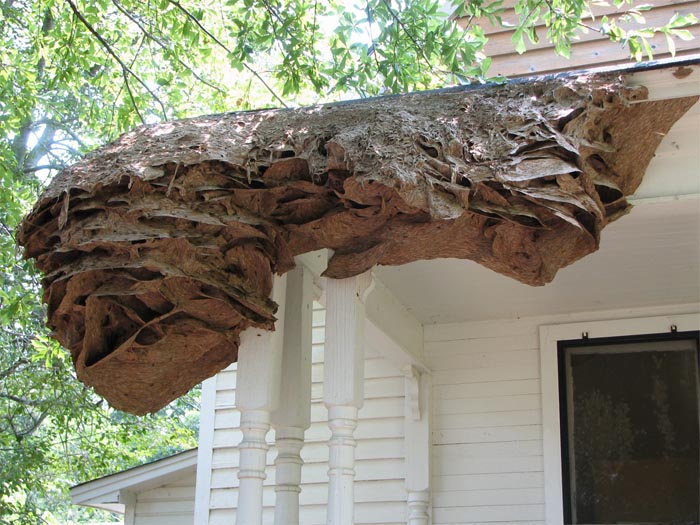
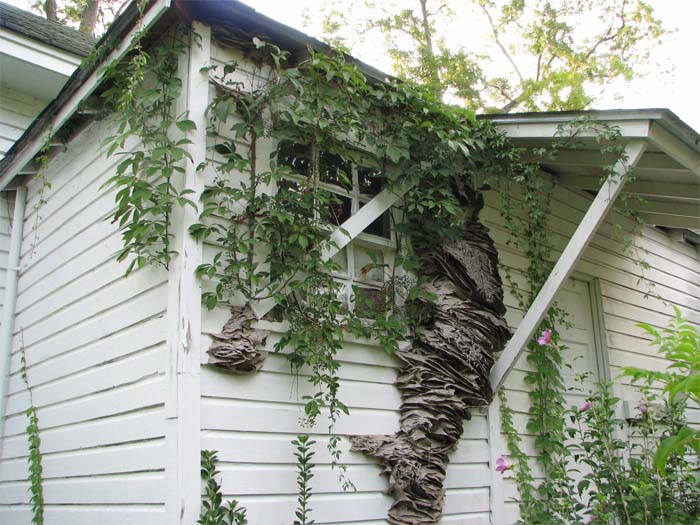
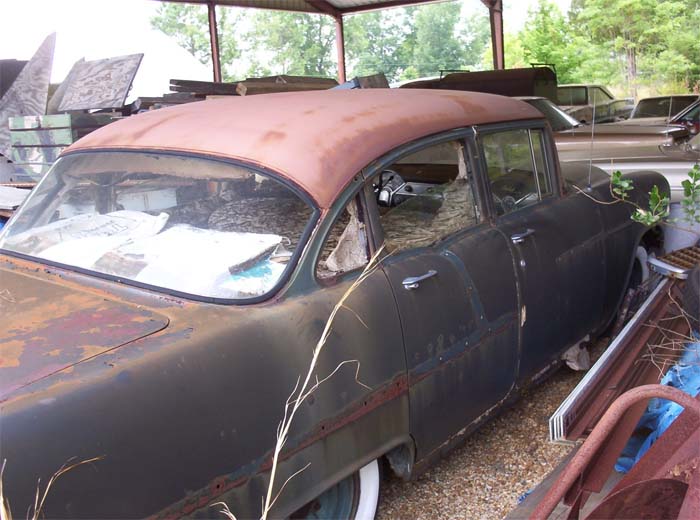
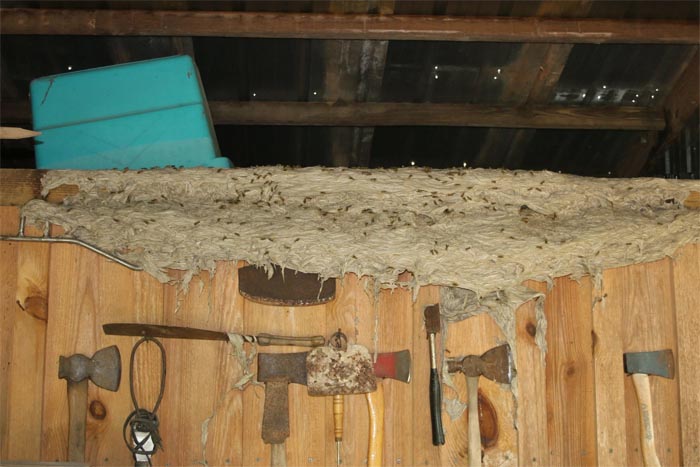
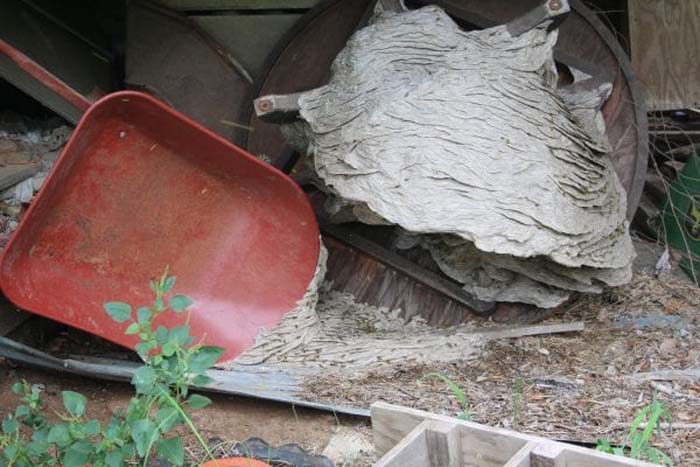
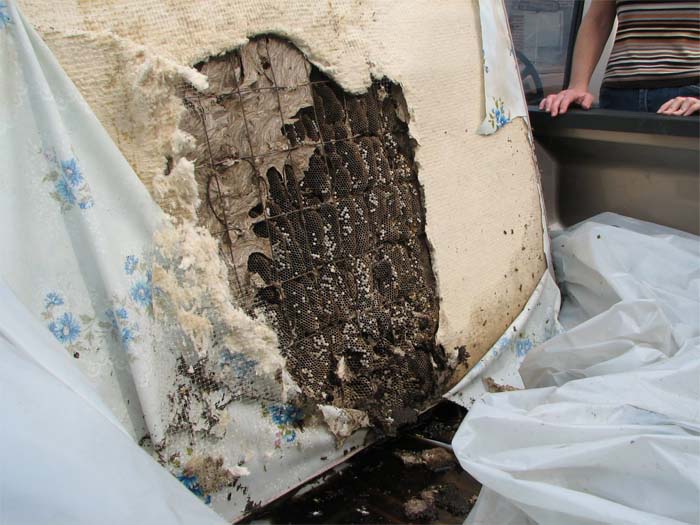
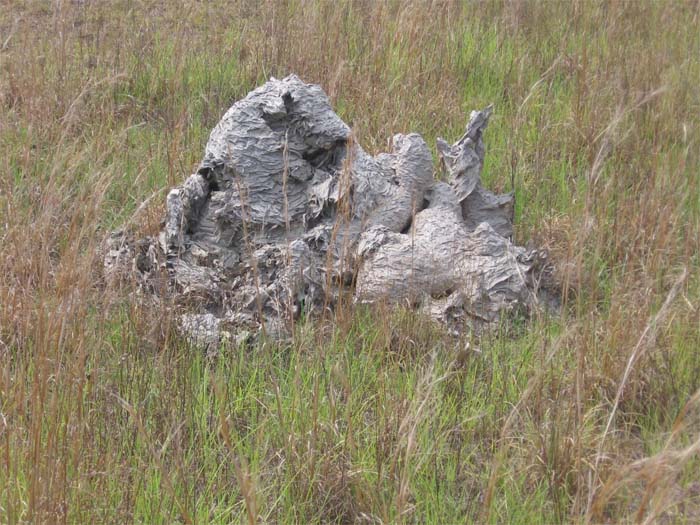
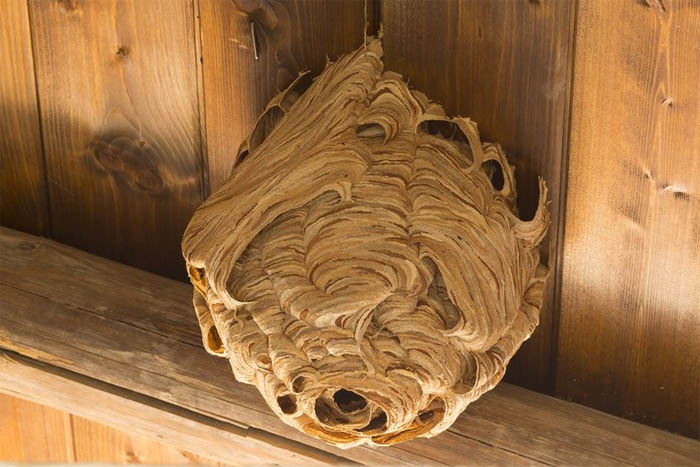
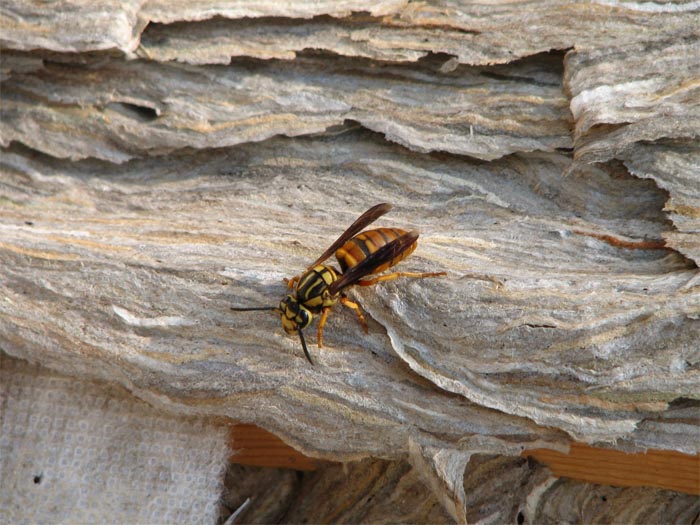
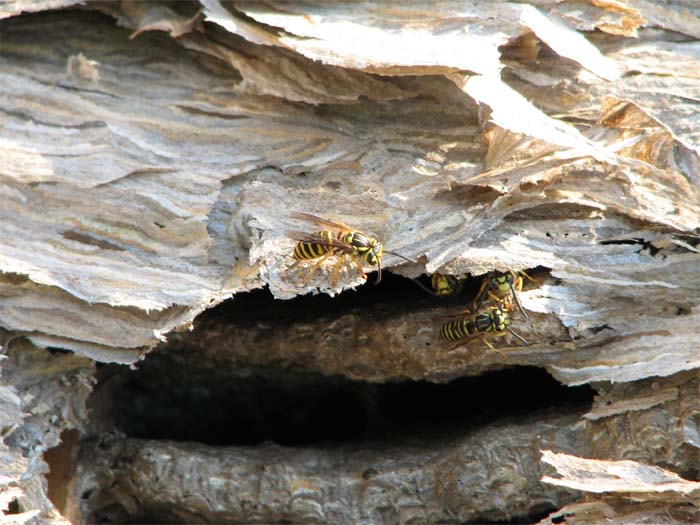
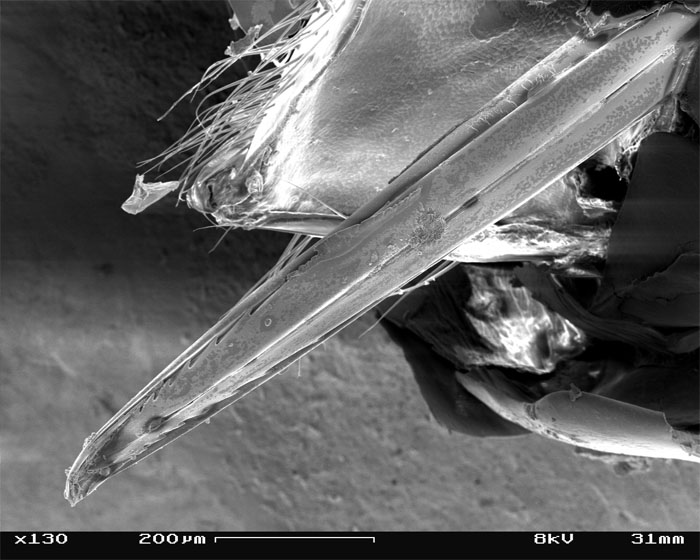
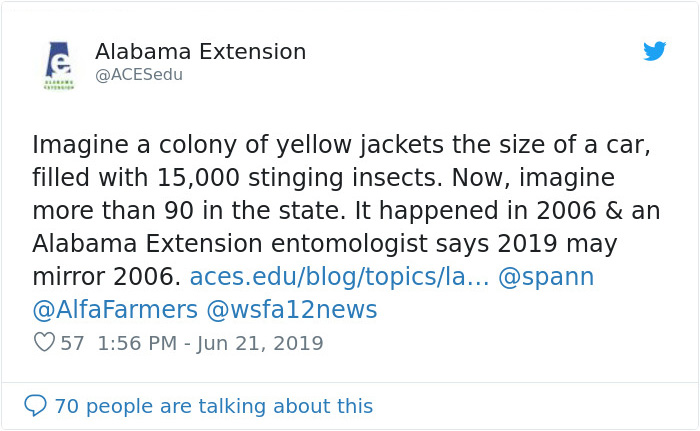
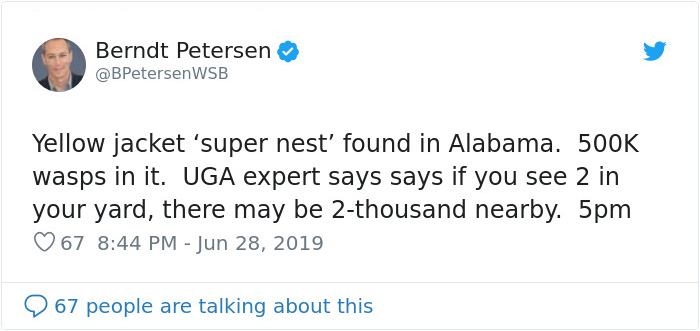


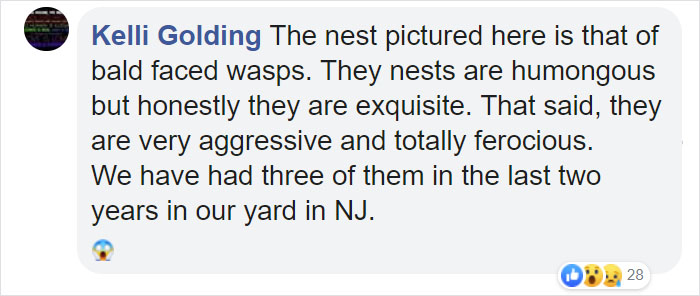





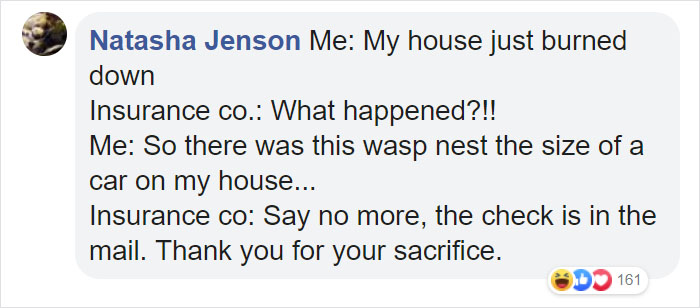













116
48